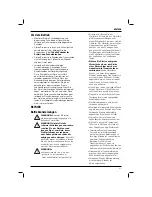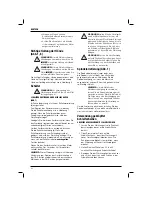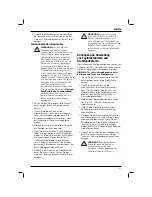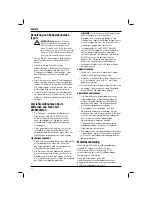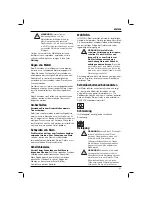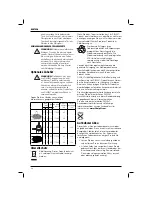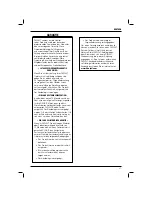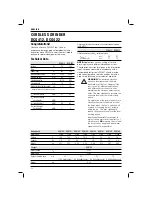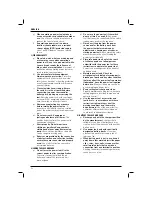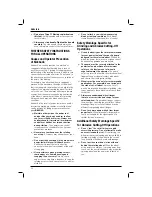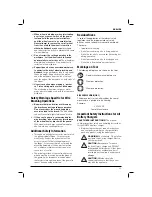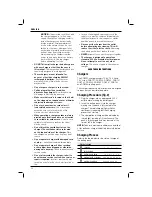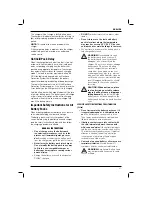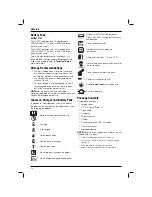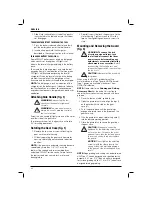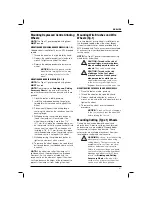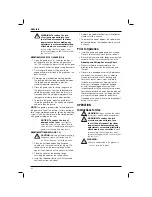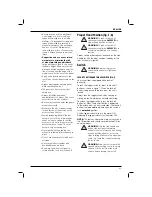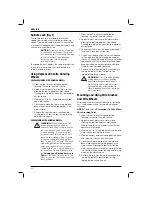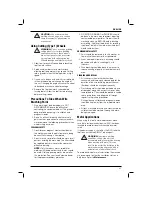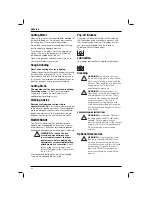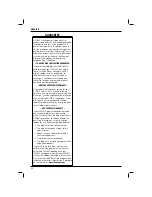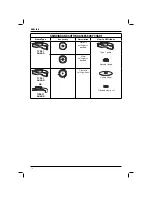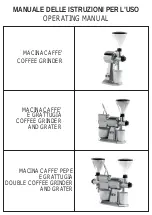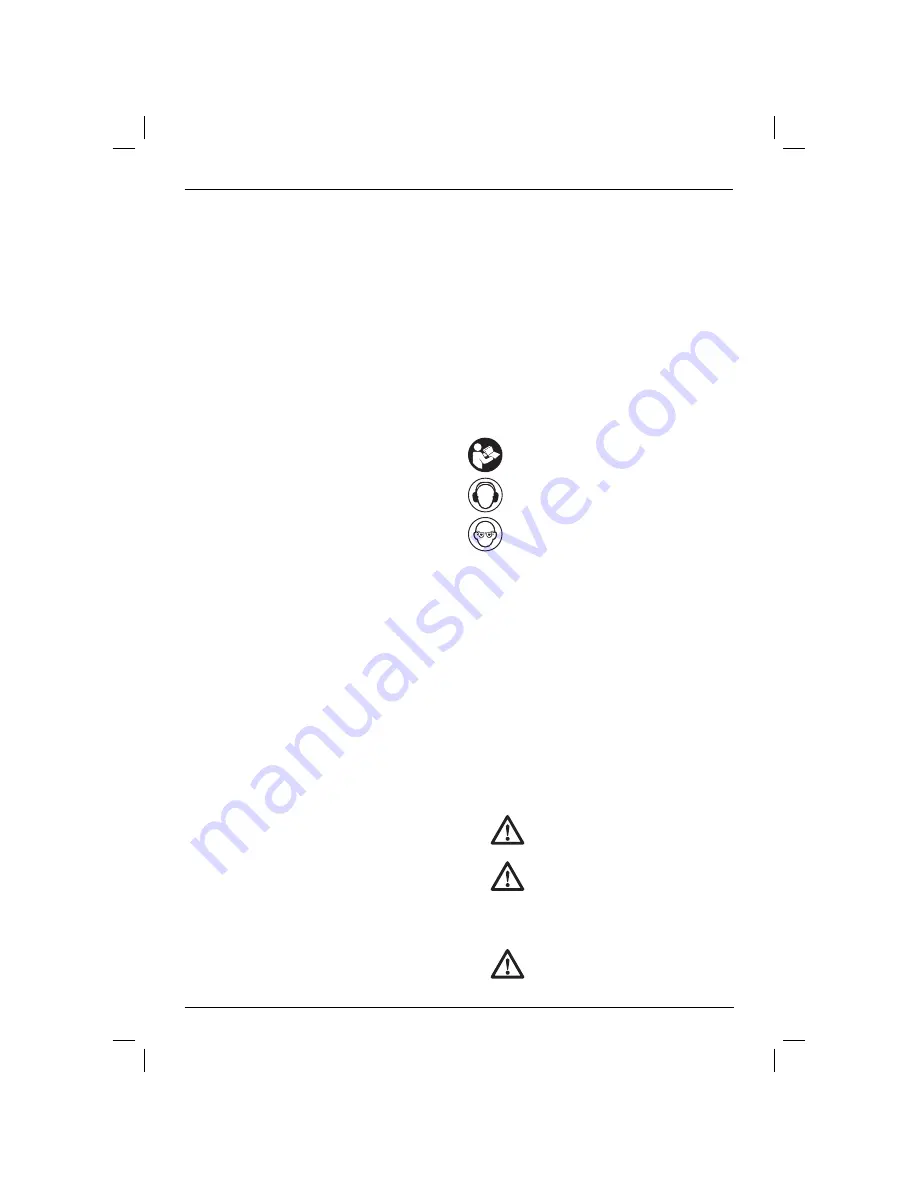
ENGLISH
55
c)
When wheel is binding or when interrupting
a cut for any reason, switch off the power
tool and hold the power tool motionless
until the wheel comes to a complete stop.
Never attempt to remove the cut-off wheel
from the cut while the wheel is in motion
otherwise kickback may occur.
Investigate
and take corrective action to eliminate the cause
of wheel binding.
d)
Do not restart the cutting operation in the
workpiece. Let the wheel reach full speed
and carefully re-enter the cut.
The wheel may
bind, walk up or kickback if the power tool is
restarted in the workpiece.
e)
Support panels or any oversized workpiece
to minimise the risk of wheel pinching and
kickback.
Large workpieces tend to sag under
their own weight. Supports must be placed
under the workpiece near the line of cut and
near the edge of the workpiece on both sides of
the wheel.
f)
Use extra caution when making a “pocket
cut” into existing walls or other blind areas.
The protruding wheel may cut gas or water
pipes, electrical wiring or objects that can cause
kickback.
Safety Warnings Specifi c for Wire
Brushing Operations
a)
Be aware that wire bristles are thrown by
the brush even during ordinary operation.
Do not overstress the wires by applying
excessive load to the brush.
The wire bristles
can easily penetrate light clothing and/or skin.
b)
If the use of a guard is recommended for
wire brushing, do not allow any interference
of the wire wheel or brush with the guard.
Wire wheel or brush may expand in diameter
due to work and centrifugal forces.
Additional Safety Information
• Threaded mounting of accessories must match
the grinder spindle thread. For accessories
mounted by flanges, the arbour hole of the
accessory must fit the locating diameter of
the flange. Accessories that do not match the
mounting hardware of the power tool will run
out of balance, vibrate excessively and may
cause loss of control.
• The grinding surface of the centre depressed
wheels must be mounted below the plane of
the guard lip. An improperly mounted wheel
that projects through the plane of the guard lip
cannot be adequately protected.
Residual Risks
In spite of the application of the relevant safety
regulations and the implementation of safety
devices, certain residual risks cannot be avoided.
These are:
– Impairment of hearing.
– Risk of personal injury due to flying particles.
– Risk of burns due to accessories becoming hot
during operation.
– Risk of personal injury due to prolonged use.
– Risk of dust from hazardous substances.
Markings on Tool
The following pictograms are shown on the tool:
Read instruction manual before use.
Wear ear protection.
Wear eye protection.
DATE CODE POSITION (FIG. 1)
The date code (s), which also includes
the year of
manufacture, is printed into the housing.
Example:
2013 XX XX
Year of Manufacture
Important Safety Instructions for All
Battery Chargers
SAVE THESE INSTRUCTIONS:
This manual
contains important safety and operating instruc tions
for the DCB105 battery charger.
• Before using the charger, read all instructions
and cautionary markings on charger, battery
pack and product using the battery pack.
WARNING:
Shock hazard. Do not allow
any liquid to get inside charger. Electric
shock may result.
CAUTION:
Burn hazard. To reduce
the risk of injury, charge only D
E
WALT
rechargeable battery packs. Other types
of batteries may overheat and burst
resulting in personal injury and property
damage.
CAUTION:
Children should be
supervised to ensure that they do not
play with the appliance.

